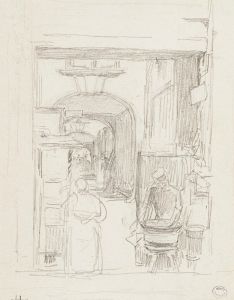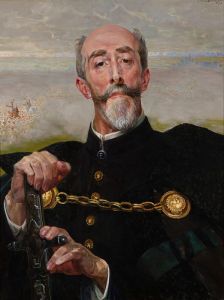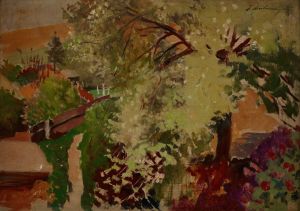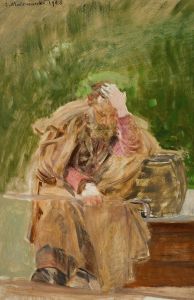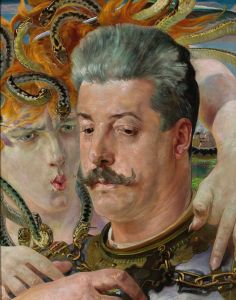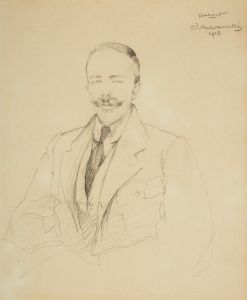
Portrait of priest Henryk Radomiński
A hand-painted replica of Jacek Malczewski’s masterpiece Portrait of priest Henryk Radomiński, meticulously crafted by professional artists to capture the true essence of the original. Each piece is created with museum-quality canvas and rare mineral pigments, carefully painted by experienced artists with delicate brushstrokes and rich, layered colors to perfectly recreate the texture of the original artwork. Unlike machine-printed reproductions, this hand-painted version brings the painting to life, infused with the artist’s emotions and skill in every stroke. Whether for personal collection or home decoration, it instantly elevates the artistic atmosphere of any space.
Jacek Malczewski, a prominent Polish painter, is renowned for his contributions to the Symbolist movement in art. One of his notable works is the "Portrait of Priest Henryk Radomiński." This painting exemplifies Malczewski's skill in portraiture and his ability to capture the essence of his subjects through a Symbolist lens.
Jacek Malczewski was born on July 15, 1854, in Radom, Poland, and became one of the most significant figures in Polish art at the turn of the 20th century. He is often associated with the Young Poland movement, which sought to rejuvenate Polish art and culture during a time when Poland was partitioned and lacked political independence. Malczewski's work is characterized by its exploration of Polish identity, mythology, and spirituality, often incorporating allegorical and symbolic elements.
The "Portrait of Priest Henryk Radomiński" is a testament to Malczewski's mastery in capturing the psychological depth and character of his subjects. Although specific details about the painting's creation, such as the exact date and circumstances, are not widely documented, it is known that Malczewski often painted portraits of individuals who were significant in Polish society or who had personal connections to him.
In this portrait, Malczewski employs his characteristic style, which blends realism with symbolic undertones. The priest is depicted with a serene yet contemplative expression, suggesting a depth of thought and spirituality. Malczewski's use of color and light enhances the subject's presence, drawing the viewer's attention to the priest's face and eyes, which are often considered the focal points in Malczewski's portraits.
Malczewski's portraits are not merely representations of physical likeness; they are imbued with a sense of narrative and emotion. In the case of Priest Henryk Radomiński, the painting may reflect the priest's role and status within the community, as well as his personal virtues and spiritual dedication. Malczewski's ability to convey such attributes through his art is a hallmark of his work.
The background and setting of the portrait are typically subdued, allowing the viewer to focus on the subject. This approach is consistent with Malczewski's style, where the emphasis is placed on the individual rather than the surroundings. The simplicity of the background serves to highlight the complexity and depth of the human subject.
Jacek Malczewski's contribution to Polish art extends beyond his portraits. He is celebrated for his exploration of national themes and his ability to weave Polish folklore, history, and mythology into his work. His paintings often reflect the struggles and aspirations of the Polish people during a time of political upheaval and cultural renaissance.
The "Portrait of Priest Henryk Radomiński" is a fine example of Malczewski's artistic vision and his commitment to portraying the human spirit. Through his skillful use of symbolism and realism, Malczewski captures not only the likeness of his subjects but also their inner lives and the broader cultural context in which they lived.
In summary, Jacek Malczewski's "Portrait of Priest Henryk Radomiński" is a significant work that showcases the artist's ability to blend realism with symbolic meaning. It reflects Malczewski's deep engagement with Polish identity and his mastery of portraiture, making it an important piece in the canon of Polish art.









